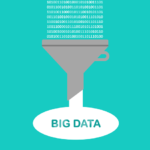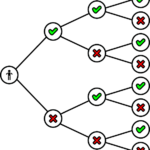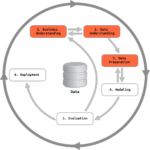Business Intelligence is a technique that uses technologies to create, manage and analyze all data to gain business insights. Moreover, it uses set of processes that convert data into meaningful information to drive profitable business actions.

Business Intelligence – IT Relationship
Firstly, most important fact to achieve this goal is to understand and unify both the sides and ideas. Secondly, business organizations uses IT to achieve their objectives and goals.
Moreover, this relationship improves financial performance and market values of many business companies. Information Technology is a tool to transform the business to increase profits.
Also, BI combines data mining, data analytics, data visualization and various data tools. Take following points into consideration while preparing data visualization:
- First point is to understand the data. Before implementing the visualization, it is important to understand the relationship between the data.
- Second is data preparation. We need to develop data structure content. To verify if the data exists in a usable state. Moreover, data profiling can help to explore actual content and relationships.
- Third is data modelling. Modelling is essential technique to seek out answers for the given objective.
Why Business Intelligence?
- Firstly, it will increase profitability. BI helps business clients for short term and long term profitability and expectations.
- Secondly it optimizes costs. It is used to evaluate organizational costs.
- It helps in Customer Relationship Management (CRM). Business Intelligence applications apply analysis of customer information to provide responsiveness.
- This technique also helps in reducing risks. It provides reliability and makes use of credit risk analysis.
- Compares data with competitors in market
- To understand market trends
Processes in BI
- Data mining: Extracting and analyzing large data sets to discover patterns using statistics and machine learning.
- Reporting: To gain business insights from data.
- Data visualization: To easily understand patterns and trends, visualizing them using charts and graphs.
- Statistical analysis and descriptive analysis: Using preliminary data analysis and further exploring the data.
- Performance Metrics: Comparing performance of previous data to the current data using customized dashboards.
Future of BI?
The amount of data available is increasing rapidly over the years and business models highly rely on data and analytics. Moreover, there are features that seem to be the next step when talking about BI.
There are analytic predictive tools which will be the future of prediction software. Furthermore, use of BI expects to increase from 25 % to 50 % of potential users. Future will not only better business intelligence solution but also better people using it.
Summary
In conclusion, we have learnt that business intelligence is a method that uses technologies to create, manage and analyze all data to gain business insights. BI offers capabilities for real time sales tracking, understanding customer trends and insights.
Moreover, we learnt that how it affects information technology. Data mining, visualization, reporting, statistical and descriptive analysis are some processes of this technique. Hence, future will not only better business intelligence solution but also better people using it.



















[…] we can say that data warehouse is the core of Business Intelligence system. It is mainly used for data analysis and reporting. This system transforms the data into information […]
[…] SAP Business Intelligence […]